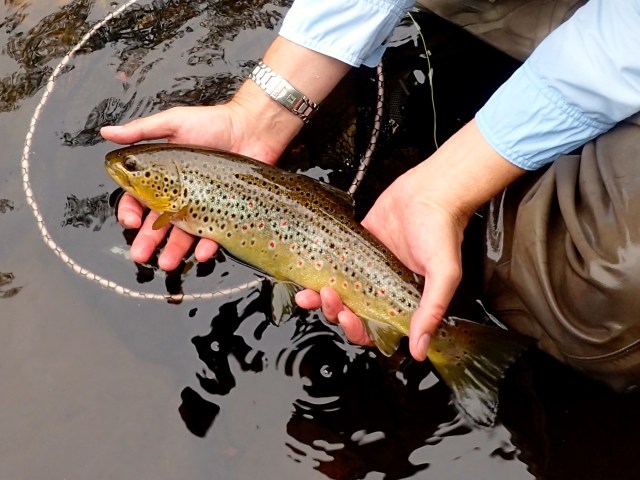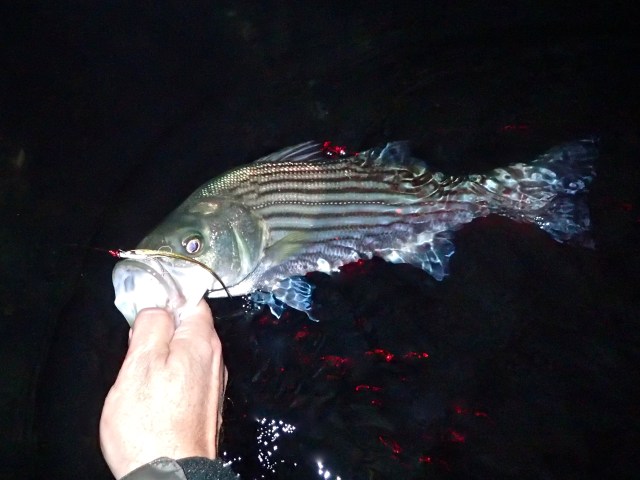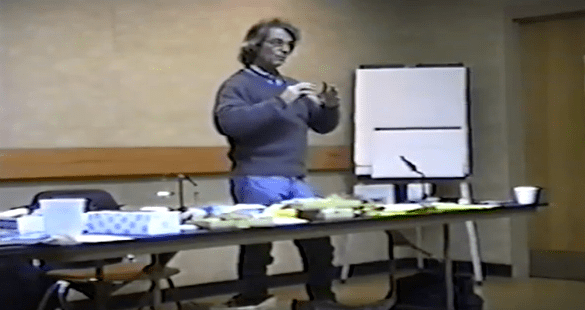I received this question this morning, and it’s a good one to share. It comes from an angler who is just starting out with a floating line for striped bass.
Q: Last night I fished the last 3 hours of outgoing with a friend. We fished a nice little rip with schoolies feeding. Same fly as my friend, about 20′ apart on my left. (A spin guy on my right). My friend caught 2 with the same fly as me. Spin guy struck out. My friend has an intermediate sink line, me and my floating. So I’m thinking is my line doing something completely different or independent from what my leader is doing down below? It was a can’t miss scenario, they were feeding for about 45 minutes. I’m thinking the line up top is doing one thing, and the leader (about 9′, 20#, 15# tapered) is doing something different in the rip below.
These were my thoughts:
Ok, let’s break this down unemotionally. Fish actively feeding for 45 minutes, yet in this “can’t miss” scenario, two out of three anglers did, and one of you managed the massive amount of…. two fish. It would be significant if the spin guy caught 20 and your friend caught 20 and you caught nothing. But you’ve got one angler catching all the fish, all being relatively few. None of you did particularly well for can’t miss.
It’s difficult to armchair quarterback a situation when I wasn’t there. But one thought is that your friend had the best angle of presentation. That happens all the time in fishing, from trout to steelhead to stripers. Or, he was simply lucky. (That also happens.) Or, he chanced upon two of the village idiots. Let me explain that last one.
I don’t know how both of you were presenting your flies, but you describe a rip. That means current. I can tell you what his intermediate line was doing the moment it hit that current. It was starting to drag. His line formed a large “C” shape and his flies followed that path at a high speed, even faster if he was stripping. So he caught two fish that were willing to chase. If you had a floating line, and you weren’t mending, your line was doing the same. Given identical flies, both flies were in the same relative position in the water column. If you were mending, your fly was moving slower, and depending on its weight and the speed of the current, probably higher in the water column.
The concept of line and leader behaving differently is a core principal of line management. When nymping at a distance, a trout angler may have his line flat on the surface — that is, when it’s not airborne because he/she is throwing a series of upstream mends during the presentation — while the leader is at a right angle to the surface with the flies bouncing along the bottom. Line and leader are doing very different things. In a greased line swing, the line is being moved in an upstream arc in a series of mends, while the leader and fly remain perpendicular to the current as they move downstream and toward the angler’s side of the river. Line and leader doing very different things. It’s called line control. Presentation. And it’s the difference between fly fishing and treating your fly rod like a glorified spinning rod.
You weren’t not catching fish because you were using a floating line. None of of you did well because you weren’t presenting a fly or lure that matched what the fish were feeding on in the manner they were feeding.
What’s the bait? How are the bass eating it? What flies do I have that match that bait, and how can I deliver that fly to make it easy for the bass to eat? Answer those questions correctly, and you’re on your way to catching the fish that not everyone can catch.










